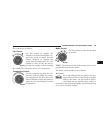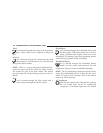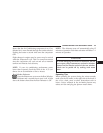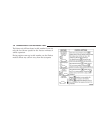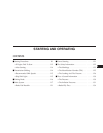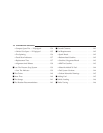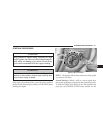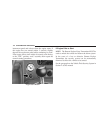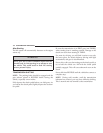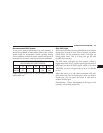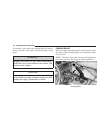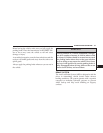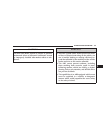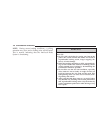
WARNING!
Do not attempt to push or tow your vehicle to get it
started. Unburned fuel could enter the catalytic
converter and once the engine has started, ignite and
damage the converter and vehicle. If the vehicle has
a discharged battery, booster cables may be used to
obtain a start from a booster battery or the battery in
another vehicle. This type of start can be dangerous
if done improperly, so follow this procedure care-
fully. See section 6 of this manual for jump starting
instructions.
If the engine fails to start after you have followed the
“NORMAL STARTING” procedure, it may be flooded.
Push the accelerator pedal all the way to the floor and
hold it there while cranking the engine. This should clear
any excess fuel in case the engine is flooded.
NOTE: To prevent damage to the starter, do not crank
the engine for more than 15 seconds at a time. Wait 10 to
15 seconds before trying again.
If the engine has been flooded, it may start to run, but not
have enough power to continue running when the start
button is released. If this occurs, continue cranking with
the accelerator pedal pushed all the way to the floor.
Release the accelerator pedal and the start button once
the engine is running smoothly.
If the engine shows no sign of starting after two 15
second periods of cranking with the accelerator pedal
held to the floor, the “NORMAL STARTING” procedure
should be repeated.
STARTING AND OPERATING 113
5



